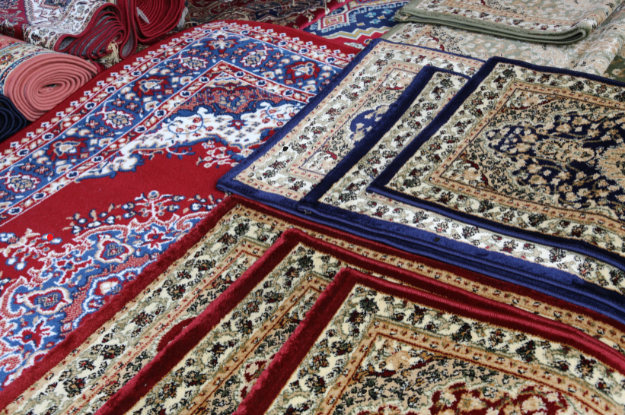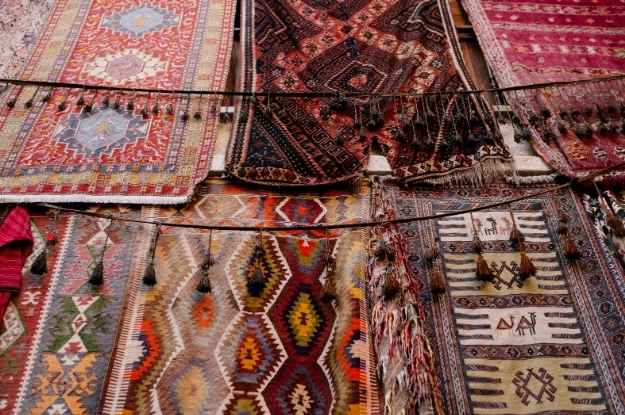
The global rug industry has witnessed steady growth in recent years, with demand driven by rising consumer interest in home décor and a growing appreciation for handcrafted, artisan pieces. The expansion of emerging markets presents a wealth of opportunities for distributors, manufacturers, and retailers in the rug sector. As urbanization, disposable incomes, and digital connectivity grow in these regions, so too does the potential for global rug distribution.
In this article, we will explore the key emerging markets for rug distribution, the opportunities these regions offer, and the factors driving growth in the global rug industry.
The Global Rug Market Overview
The global rug market was valued at approximately $11.8 billion in 2020 and is expected to reach $18.3 billion by 2027, growing at a compound annual growth rate (CAGR) of 6.1% from 2021 to 2027. This growth is largely fuelled by consumer preferences for aesthetically pleasing home interiors and the increasing use of rugs for both decorative and functional purposes.
While developed markets such as North America and Europe have long been major consumers of rugs, emerging markets in Asia, the Middle East, Africa, and Latin America are now playing a crucial role in the industry’s growth. The expanding middle class, rapid urbanization, and digital transformation in these regions are creating new avenues for global rug distribution.
Why Shivalika Rugs Global Rug Distribution?
Shivalika Rugs is a global leader in the production and distribution of handcrafted, artisanal rugs. With a deep-rooted heritage in creating premium, one-of-a-kind textiles, Shivalika Rugs blends traditional craftsmanship with modern design trends, making it the perfect partner for those seeking unique and sustainable rug solutions in emerging markets.
As the global rug industry continues to grow, particularly in regions like Asia-Pacific, the Middle East, Africa, and Latin America, Shivalika Rugs is well-positioned to tap into these opportunities. Our expansive collection, which includes a diverse range of styles from classic to contemporary, appeals to the tastes of a growing middle class with a keen eye for quality and authenticity.
We prioritize ethical sourcing and sustainable practices, ensuring that each rug we create supports local artisans and the environment. Shivalika Rugs is also equipped to thrive in the digital era, offering seamless e-commerce integration that allows distributors and consumers alike to browse and purchase our exquisite products with ease. With a commitment to superior craftsmanship and innovation, Shivalika Rugs is your gateway to thriving in the dynamic, expanding markets of the global rug industry. Partner with us and elevate your product offerings while making a positive impact on communities worldwide.
Key Emerging Markets for Rug Distribution
1. Asia-Pacific
The Asia-Pacific region, particularly countries like China, India, and Southeast Asia, presents significant opportunities for rug distribution. With a growing middle class and increasing urbanization, demand for home décor products, including rugs, is rising rapidly.
- China: As the world’s largest consumer market, China has become a major hub for home décor products. Chinese consumers are increasingly interested in luxurious, high-quality rugs as part of their modern lifestyles. The e-commerce boom in China also provides international rug distributors with a platform to reach millions of potential customers.
- India: India has a rich history of rug making, particularly in regions like Kashmir and Rajasthan. With the rise of e-commerce and increasing disposable income, Indian consumers are embracing modern, artisanal, and traditional rugs. India is not only a key market for domestic sales but also a significant exporter of handmade rugs, making it a double-edged opportunity for global players.
- Southeast Asia: Countries such as Vietnam, Thailand, and Indonesia are seeing a rise in home décor trends due to urbanization and the growing number of middle-income households. Southeast Asia’s young population, growing digital connectivity, and increasing demand for trendy home furnishings create opportunities for online and offline rug distributors.
2. Middle East and North Africa (MENA)
The MENA region is known for its deep-rooted tradition of rug making, particularly in countries like Iran, Turkey, and Morocco. The region offers substantial growth potential for both modern and traditional rug designs.
- UAE and Saudi Arabia: These Gulf countries are undergoing massive development projects, with new residential and commercial spaces in need of high-quality home furnishings. The increasing number of expatriates in these nations also contributes to the demand for diverse styles of rugs, catering to different tastes and preferences.
- Morocco: Morocco has become a hotspot for artisanal, handwoven rugs. The traditional Moroccan rug, known for its bold patterns and vibrant colors, has gained global popularity. This provides both a local and international opportunity for distributors to tap into this niche market.
3. Africa
Sub-Saharan Africa is a rapidly growing market, with increasing urbanization and a growing middle class driving demand for home décor products. While the market for rugs in Africa is still in its early stages, countries like Nigeria, Kenya, and South Africa are showing promise due to rising consumer spending and a growing interest in home aesthetics.
- Nigeria: As Africa’s most populous country, Nigeria has a large, youthful population with increasing purchasing power. The growing penetration of e-commerce platforms such as Jumia is opening up opportunities for global rug distributors to reach a broader audience.
- South Africa: South Africa’s affluent urban population is increasingly interested in home improvement and interior design. There is also a strong demand for high-quality, imported rugs, which presents an opportunity for foreign distributors.
4. Latin America
Latin America is another emerging market with significant growth potential in the rug industry. Countries such as Brazil, Mexico, and Argentina are seeing rising demand for home décor products, driven by urbanization and increasing disposable income.
- Brazil: As the largest economy in Latin America, Brazil’s consumer market is rapidly evolving. Brazilian consumers are increasingly looking for affordable yet stylish home furnishings, including rugs, creating opportunities for global distributors.
- Mexico: Mexico’s proximity to the United States provides a strategic advantage for rug distributors looking to expand in the region. The growing middle class in Mexico is showing an increasing appetite for home décor products, particularly in urban areas.
Factors Driving Growth in Rugs Emerging Markets
- Urbanization: Urbanization is a key driver of rug demand in emerging markets. As more people move to cities, the need for stylish and functional home décor items, including rugs, increases. Urban consumers often seek modern designs and are willing to spend on premium products.
- E-commerce Boom: The rise of e-commerce platforms has revolutionized the way consumers purchase home décor items. In emerging markets, online shopping is becoming increasingly popular due to convenience, variety, and accessibility. Rug distributors can take advantage of e-commerce platforms to reach a wider audience without the need for a physical presence.
- Rising Disposable Income: The growing middle class in emerging markets has more disposable income to spend on non-essential goods, including home décor products. This increase in purchasing power is driving demand for rugs, particularly in urban areas.
- Cultural Appreciation: In regions like the Middle East, North Africa, and Asia, rugs have cultural significance and are considered an essential part of home décor. This cultural appreciation for rugs is driving both domestic and international demand for traditional and modern rug designs.
- Sustainability and Ethical Sourcing: Consumers in emerging markets are becoming more conscious of sustainability and ethical sourcing. Rugs made from eco-friendly materials, or those produced by artisans in fair-trade environments, are gaining popularity. Distributors who focus on sustainable practices can tap into this growing market trend.
Challenges and Considerations
While there are numerous opportunities in emerging markets, there are also challenges that rug distributors must navigate. These include:
- Logistics and Supply Chain Issues: Emerging markets may face logistical challenges, such as underdeveloped transportation infrastructure and customs delays, which can impact the distribution of rugs.
- Cultural Differences: Understanding local preferences and cultural differences is key to successfully entering new markets. Distributors must ensure their product offerings align with the tastes and expectations of consumers in different regions.
- Competition: As the rug industry grows, competition from both local and international players is intensifying. Distributors must differentiate themselves by offering unique products or superior customer service.
Conclusion
Emerging markets offer a wealth of opportunities for global rug distribution. Regions such as Asia-Pacific, the Middle East, Africa, and Latin America are witnessing significant growth in demand for home décor products, driven by urbanization, rising incomes, and digital transformation. Rug distributors who can successfully navigate the challenges and capitalize on these opportunities will be well-positioned for long-term growth in the global rug market.
10 FAQs
- Why are emerging markets becoming important for global rug distribution?
Emerging markets are experiencing rapid urbanization, growing disposable incomes, and increasing digital connectivity, which drive demand for home décor products like rugs. These factors create new opportunities for distributors to expand their reach. - What role does e-commerce play in rug distribution in emerging markets?
E-commerce platforms are revolutionizing rug distribution by offering a convenient way for consumers in emerging markets to browse, purchase, and receive rugs without visiting physical stores. This growth in online shopping provides distributors access to a broader audience. - How do cultural differences impact rug distribution in different regions?
Cultural preferences vary widely across regions, influencing the types of rugs that appeal to local consumers. Understanding these differences is crucial for distributors to tailor their product offerings to local tastes and traditions. - Which countries in the Asia-Pacific region are key markets for rugs?
China, India, and Southeast Asian countries such as Vietnam and Indonesia are key emerging markets in the Asia-Pacific region due to their growing middle classes, urbanization, and increasing demand for home décor. - What challenges do distributors face in emerging markets?
Distributors may encounter logistical challenges such as underdeveloped infrastructure, customs delays, and competition from local players. Understanding and overcoming these obstacles is essential for success. - How is sustainability influencing rug demand in emerging markets?
Consumers in emerging markets are becoming more aware of sustainability and ethical sourcing, leading to increased demand for eco-friendly rugs and those made by artisans in fair-trade environments. Distributors focusing on these aspects can tap into this growing trend. - What makes the Middle East a unique market for rug distribution?
The Middle East has a long-standing tradition of rug making, and countries like Iran, Turkey, and Morocco are renowned for their handmade rugs. The region also has strong demand for both modern and traditional designs, making it an attractive market for distributors. - How are logistics and supply chain issues impacting rug distribution?
Poor transportation infrastructure and customs delays in some emerging markets can complicate the supply chain, leading to delays and increased costs. Distributors need to carefully manage these logistical challenges. - What opportunities exist in Sub-Saharan Africa for rug distribution?
Countries like Nigeria, Kenya, and South Africa are experiencing rapid urbanization and a growing middle class, which are driving demand for home décor products, including rugs. E-commerce platforms are also expanding in these regions, providing more opportunities for distributors. - How can global rug distributors differentiate themselves in competitive markets?
Distributors can differentiate themselves by offering unique, high-quality products, exceptional customer service, and focusing on sustainability and ethical sourcing. They can also use digital tools to personalize shopping experiences and target niche markets.
References
- Grand View Research. (2021). “Rug Market Size, Share & Trends Analysis Report.” Retrieved from Grand View Research
- Statista. (2021). “Global Rugs Market – Forecasts and Trends.”
- Mordor Intelligence. (2021). “Home Textile Market – Growth, Trends, and Forecasts (2022 – 2027).”




